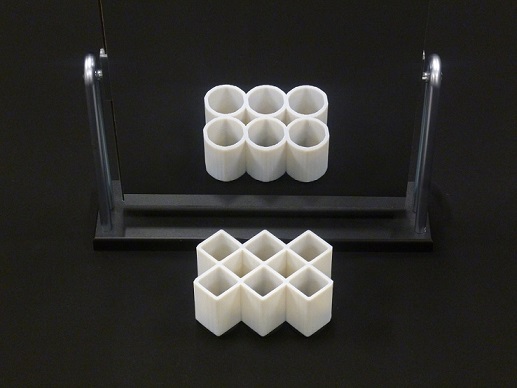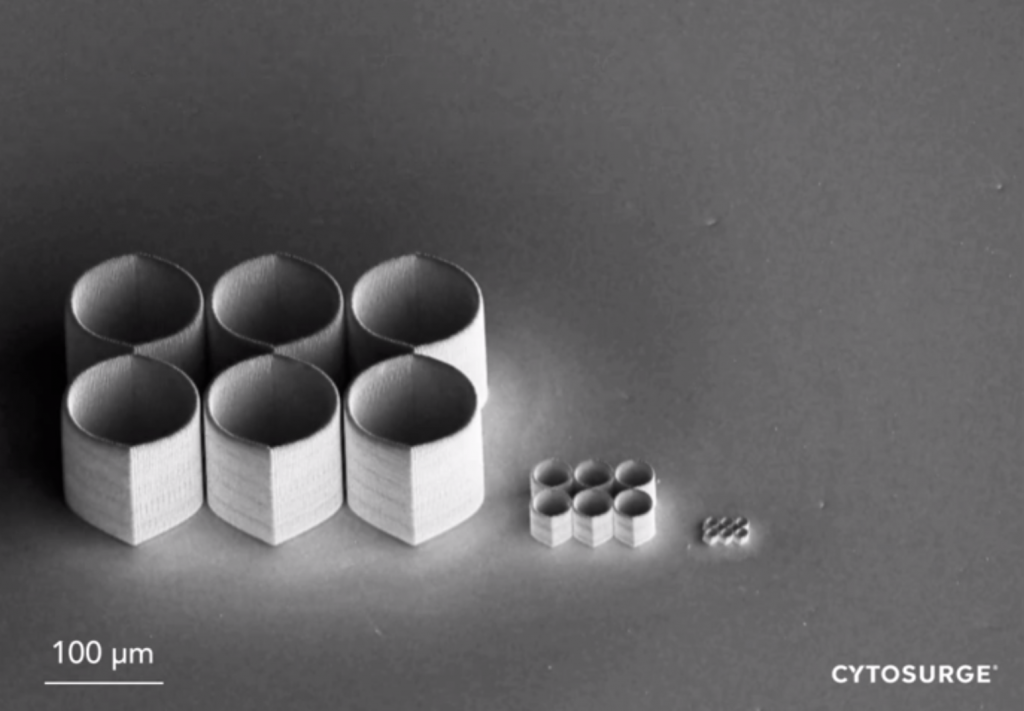Working with Professor Kokichi Sugihara, mathematician and master of illusion, Swiss micro 3D printing company Cytosurge has realized a class of so-called “impossible objects” in 3D.
Better known as optical illusions, these microscopic impossible objects demonstrate the potential of Cytosurge’s FluidFM technology, and push the boundaries of optical physics.
3D printing illusions
At Meiji University in Japan Professor Sugihara is a lecturer in mathematical engineering and engineering geometry. Best known for his impossible objects, Professor Sugihara applies his mathematical expertise to create physical objects that use perspective to create illusion.
Ambiguous Objects are a class of illusions discovered by Professor Sigihara that change appearance when reflected in a mirror. One example of an Ambiguous Object is the “Ambiguous Cylinder: Rectangles and Circles” – a collection of six circular tubes that appear as rectangles when the perspective is changed.
This Ambiguous Object is the subject of an experiment in micro 3D printing at Cytosurge.

FluidFM electrodeposition
Cytosurge is the owner and distributor of FluidFM 3D printing technology, which was originally invented at ETH Zurich. In FluidFM, a 300 nanometer wide nozzle is used to deposit a metallic ink onto and electrically charged print bed. Termed “electrodeposition” the technique turns copper ions into solid atoms to create minuscule objects.
Tiny ambiguous rectangle to circle objects are one of the latest experiments with the FluidFM process. In a video on YouTube, Cytosurge demonstrates three of these illusions 3D printed with circles respectively measuring just 0.1 mm, 0.03 mm and 0.01 mm in diameter. In order to observe the illusion, each of these structures have to be viewed under an electron microscope.

Micro 3D printing
Working on a scale close to the natural size of cells, micro 3D printing is a particularly valuable technology to medical research. Two photon lithography has been used variously in recent years to develop microscopic robots for controlled drug delivery, and perform other micro-manipulation tasks within the body.
Micro fabrication is also applied to the development of next generation electronic devices, including potential 5G communications circuits.
Some of the unique aspects of Cytosurge’s process is that it works with an ion containing aqueous solutions (for electroplating), and that it is capable of fabricating in metal. Targeted at the research market, the company’s aim is to provide “leading-edge tools and processes to those who need or want to go beyond current technological boundaries.”
Nominate your Innovation of the Year and more in the 2019 3D Printing Industry Awards now.
For all of the latest academic 3D printing updates, subscribe to the 3D Printing Industry newsletter, follow us on Twitter and like us on Facebook.
Join 3D Printing Jobs to find your next opportunity.
Featured image shows microscopic ambiguous rectangle to circle objects 3D printed using FluidFM. Clip via Cytosurge


